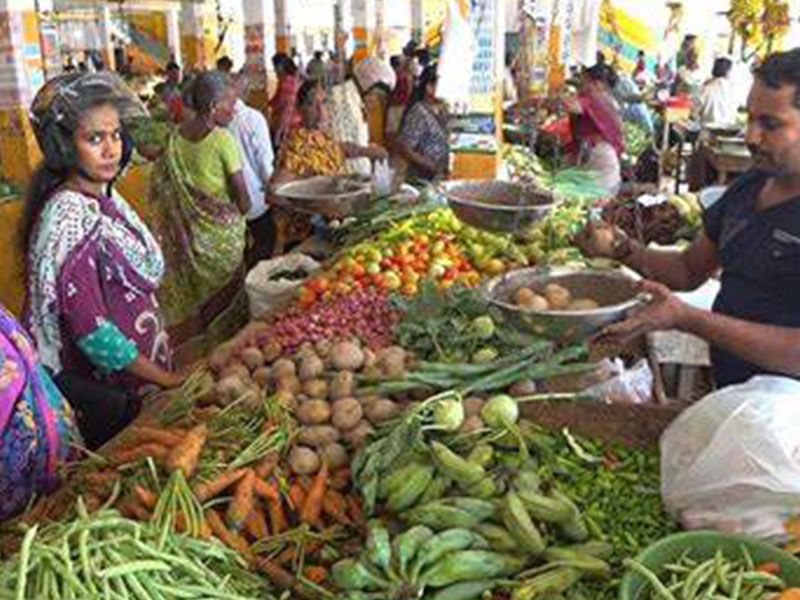In Sri Lanka, 1.7 million people, around 8% of the population, suffer from undernourishment, with children under 5 years being the most affected. Malnutrition is particularly widespread among mothers and in the estate sector. At the same time, approximately 30% of agricultural, fisheries, and livestock produce goes to waste due to various inefficiencies.
Sri Lanka’s food is largely imported.
Sri Lanka’s food system comprises locally produced and imported food. A significant portion of essential items, such as wheat, canned fish, pulses, milk powder, sugar, and vegetable oil, are imported. The complex supply and value chains in Sri Lanka have long been plagued by inefficiencies. The COVID-19 pandemic further highlighted these vulnerabilities, causing distribution breakdowns, food shortages, and price hikes. Import restrictions worsened the situation, affecting the production sector by halting imports of essential inputs.
Agriculture is important but neglected.
Agriculture contributes approximately 7% of Sri Lanka’s GDP and employs 25% of the workforce. It is not just an economic driver but also a socio-cultural cornerstone. Sri Lanka’s agricultural supply chain involves input suppliers, farmers, traders, food companies, retailers and exporters, and consumers. Four types of value chains exist, from fragmented to vertically integrated.
The Role of Middlemen
Middlemen or collectors in the agricultural supply chain often face criticism as they are considered to add unnecessary costs. However, they play a vital role in bundling and transporting agricultural produce and coordinating demand and supply. They bridge the gap in knowledge transfer between farmers and retailers. Unfortunately, the middleman’s role is not acknowledged.
Sri Lanka’s agriculture confronts several challenges that need to be addressed by a comprehensive report compiled by Slycan.
Stagnating crop yields and declining productivity, worsened by climate impacts, need to be accessed and managed.
Access to agricultural inputs, infrastructure, and labor movements needs to be improved.
High food waste along the supply chain needs to stop.
- Lengthy and costly supply chains need to be done away with.
- Rising agricultural produce prices due to climate change and policy changes need to be managed.
- Underdeveloped market information systems need to be strengthened.
- The difficulty for small-scale farmers to compete in domestic and international markets needs to be looked into.
- A significant informal labor sector, especially among women, needs to be nurtured.
Link to report : http://Sri Lanka’s Food Systems and Climate Risk: Building Resilience Across Supply and Value Chains – Blog – Knowledge Hub (slycantrust.org)







